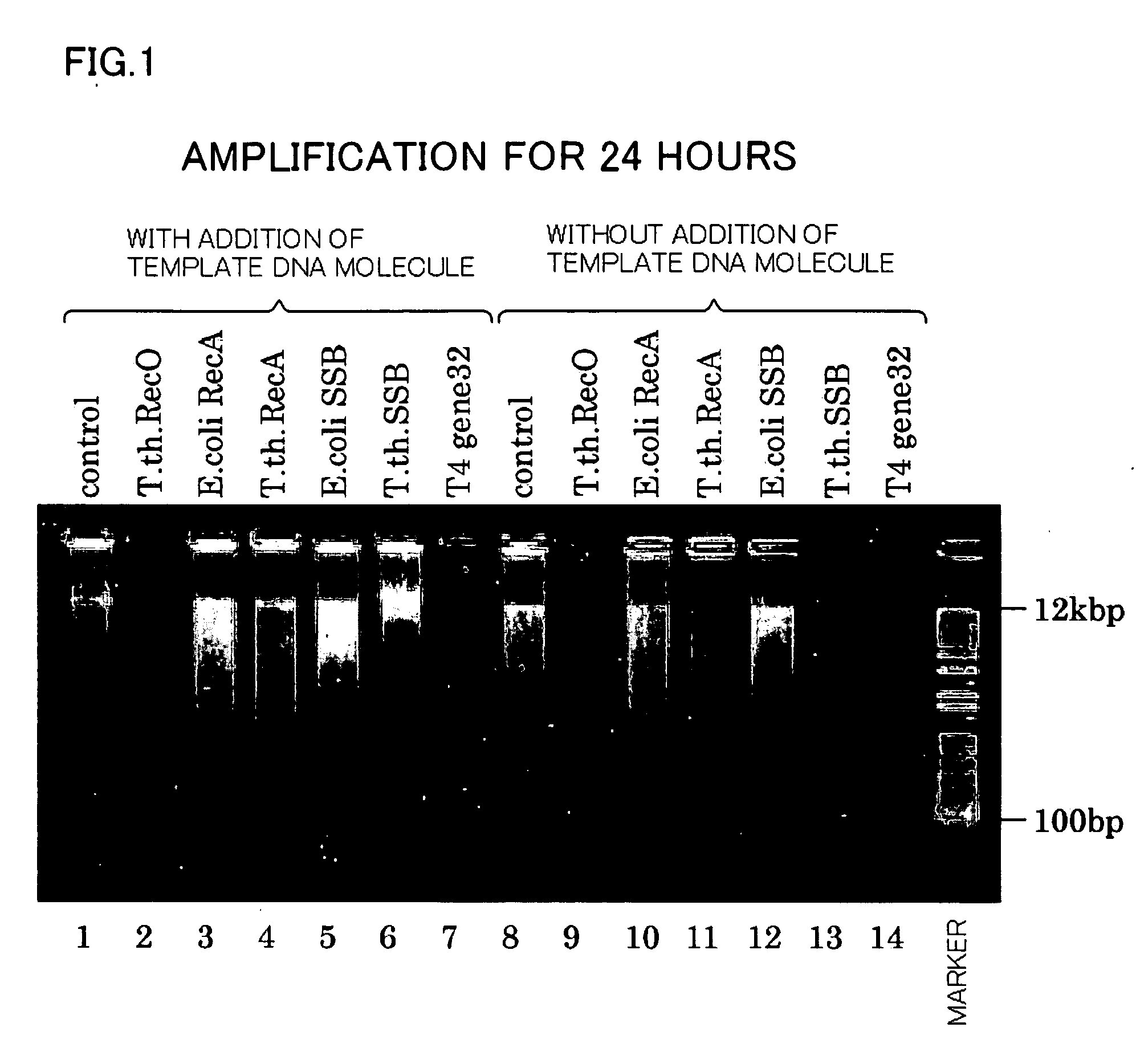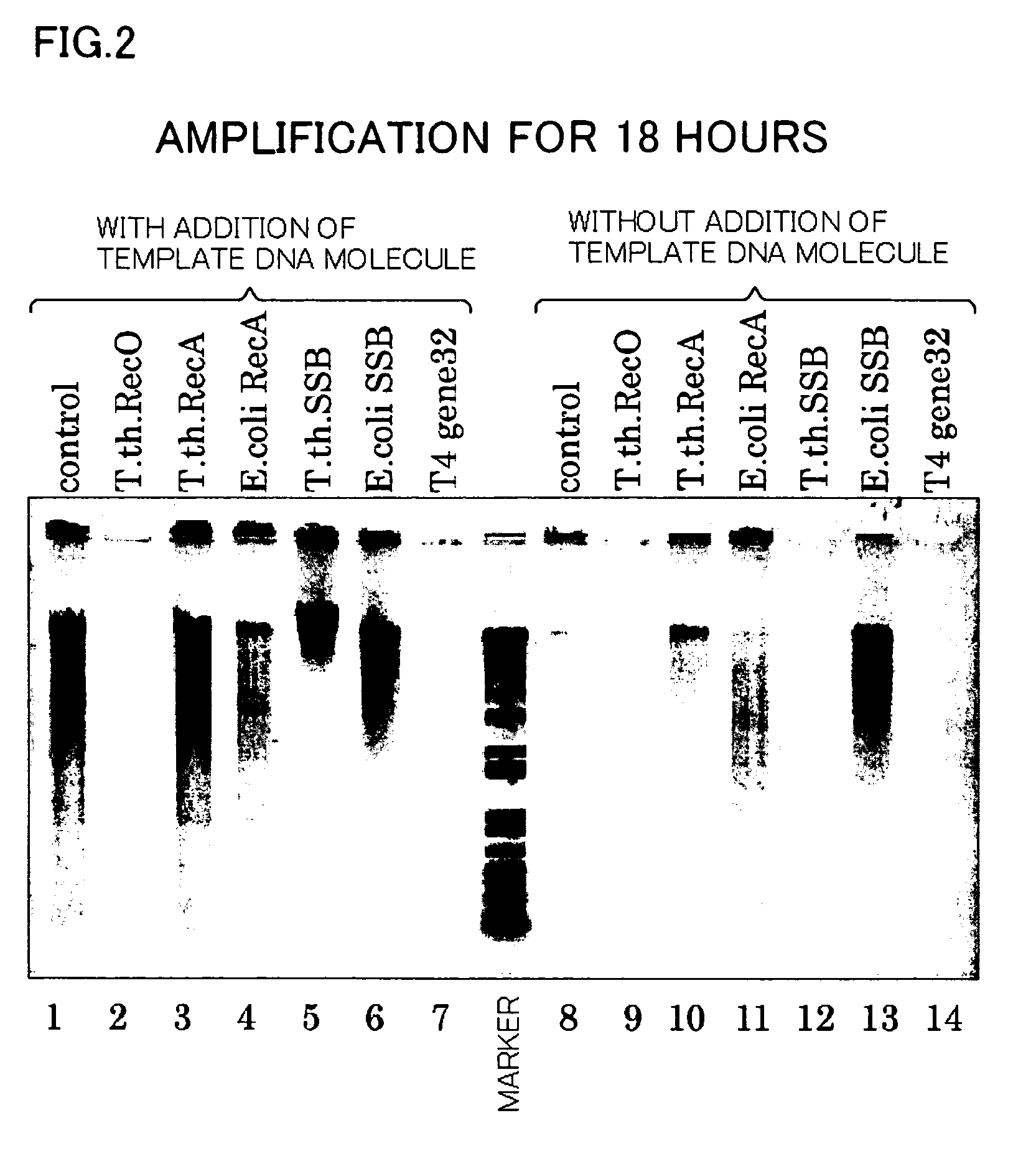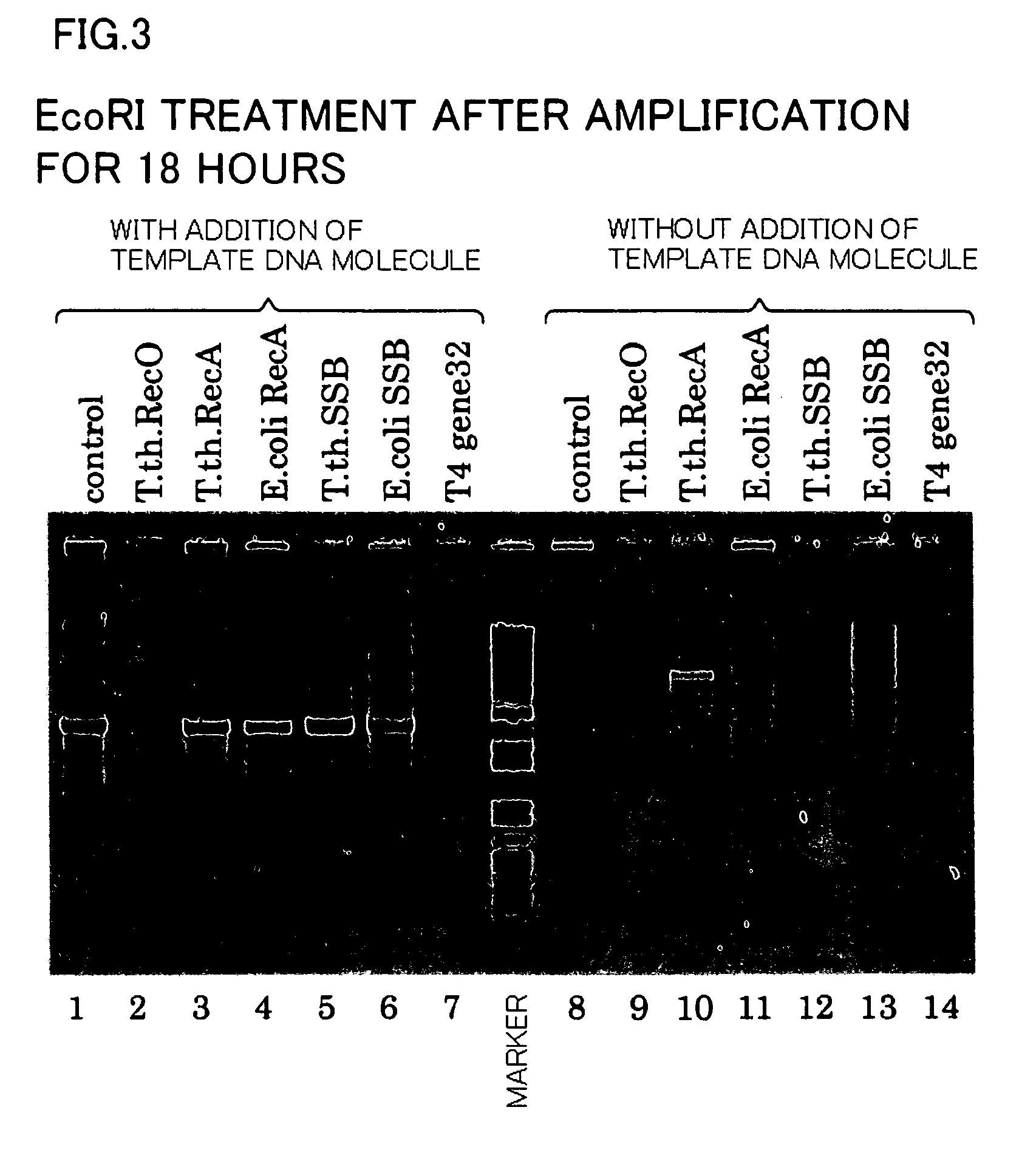Method of amplifying template DNA molecule using strand-displacing DNA polymerase capable of carrying out isothermal amplification
a technology of dna polymerase and template molecule, which is applied in the field of amplifying template dna molecule using a strand-displacing dna polymerase capable of isothermal amplification, can solve the problems of difficult to reduce background noise generation, and achieve the effects of low background noise generation, low cost and high accuracy
- Summary
- Abstract
- Description
- Claims
- Application Information
AI Technical Summary
Benefits of technology
Problems solved by technology
Method used
Image
Examples
example 1
[0062] Hereinafter, a method of amplifying a template DNA molecule of the present invention will be described with reference to the drawings. An RCA method will be explained as the method of amplification.
[0063] Using the isothermal amplification reaction system of Templiphi DNA Amplification Kit (manufactured by Amersham Biosceiences), status of amplification of DNA fragments derived from a target DNA and status of background noise generation were confirmed for Samples 1-1 to 1-14 below by the addition of any one of a variety of proteins associated with recombination (Rec0, RecA, SSB, and T4 gene 32) known as a strand-displacing factor or a replication-assisting protein.
[0064] Sample 1-1 was Control 1-1 that was used as a positive control. Using 1 ng of pUC19 DNA as a template DNA molecule, φ29 DNA polymerase as a strand-displacing DNA polymerase, and a random hexamer as a random primer, isothermal amplification of the template DNA molecule was conducted for a reaction time set f...
example 2
[0077] Using the same reaction system as in Example 1, the isothermal amplification of a template DNA molecule for Samples 2-1 to 2-14 below was conducted for a reaction time set for 18 hours:
[0078] Sample 2-1 was Control 2-1 (same as Control 1-1).
[0079] For Samples 2-2 to 2-7, amplification reaction was performed by adding the following substances to the reaction system of Sample 2-1 to make the total volume of each reaction solution to 10 μL: [0080] Sample 2-2: 3.0 μg of T. th. Rec0, [0081] Sample 2-3: 3.0 μg of T. th. RecA, [0082] Sample 2-4: 3.0 μg of E. coli RecA, [0083] Sample 2-5: 3.0 μg of T. th. SSB, [0084] Sample 2-6: 3.0 μg of E. coli SSB, and [0085] Sample 2-7: 3.0 μg of T4 gene 32.
[0086] Amplification reaction for Samples 2-8 to 2-14 was conducted under the same conditions as the Samples 2-1 to 2-7 except for the absence of the template DNA molecule.
[0087] After amplification reaction, 1% agarose electrophoresis was conducted in the same way as in Example 1 and the ...
example 3
[0091] For Samples 2-1 to 2-14 used in Example 2, obtained after isothermal amplification, 5 μL of each amplification reaction solution was subjected to a restriction enzyme (EcoRI) treatment (Samples 3-1 to 3-14). The restriction enzyme treatment was performed by using 10 units of the restriction enzyme at 37° C. for a reaction time of 2 hours.
[0092] Following the restriction enzyme treatment, 5 μL of each restriction enzyme-treated solution was subjected to 1% agarose electrophoresis. Electrophoresis was conducted in the same way as in Example 1. The results are shown in FIG. 3. In FIG. 3, lanes 1 to 14 each correspond to the reaction solutions of Samples 3-1 to 3-14 subjected to the electrophoresis.
[0093] From these results, it was found that DNA fragments specific to pUC19 DNA as the template DNA molecule were contained in Samples 3-1 and 3-3 to 3-6 (see the lanes 1 and 3 to 6).
[0094] However, it was confirmed, from the results of Sample 3-10 (T. th. RecA) subjected to amplif...
PUM
| Property | Measurement | Unit |
|---|---|---|
| concentration | aaaaa | aaaaa |
| temperature | aaaaa | aaaaa |
| temperature | aaaaa | aaaaa |
Abstract
Description
Claims
Application Information
 Login to View More
Login to View More - R&D
- Intellectual Property
- Life Sciences
- Materials
- Tech Scout
- Unparalleled Data Quality
- Higher Quality Content
- 60% Fewer Hallucinations
Browse by: Latest US Patents, China's latest patents, Technical Efficacy Thesaurus, Application Domain, Technology Topic, Popular Technical Reports.
© 2025 PatSnap. All rights reserved.Legal|Privacy policy|Modern Slavery Act Transparency Statement|Sitemap|About US| Contact US: help@patsnap.com



